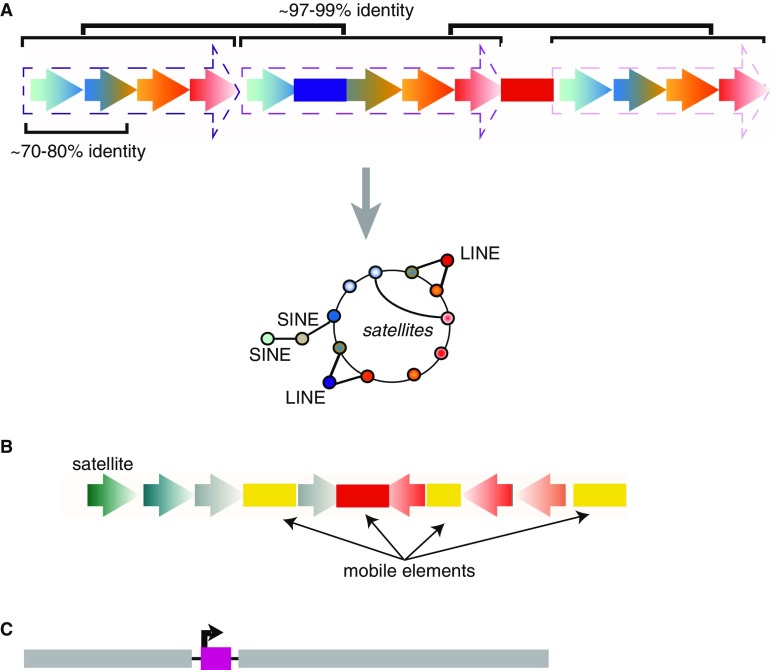Fig. 2.
a (Top) The structure of a centromere following homogenization of a stable satellite (gradient arrowheads) results in arrays of satellites, each sharing 70–80% identity, which are then organized in a tandem higher order array, with each block of satellites (dotted arrowheads), known as a HOR, sharing 97–99% identity. Random insertions of TEs (colored bars) are found interspersed among the HORs. (Bottom) Illustration of the graphical map of the same centromere shown in A, with bubbles on the inner circle representing each monomer satellite and how it is arranged in relation to other monomers in the array. Gradient bubbles correspond to gradient arrowheads. Lines indicate respective satellite or TE neighbor for each satellite. TE insertions and their relative location with respect to specific monomers are indicated by solid bubbles linked to the inner circle. b The structure of a complex centromere, exemplified by maize, rice, and potato, is characterized by diverse TEs (colored bars) and variable satellites (gradient arrowheads). c The structure of a neocentromere in which a single transcriptionally active mobile element (pink) inserted into non-centromeric DNA (gray). Arrowhead indicates promoter activity

